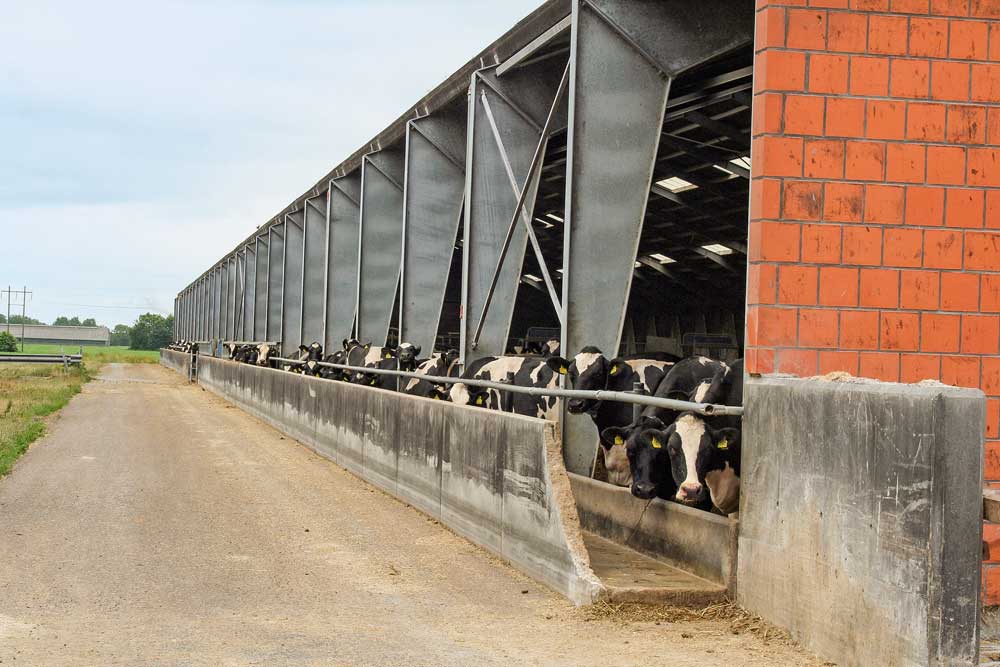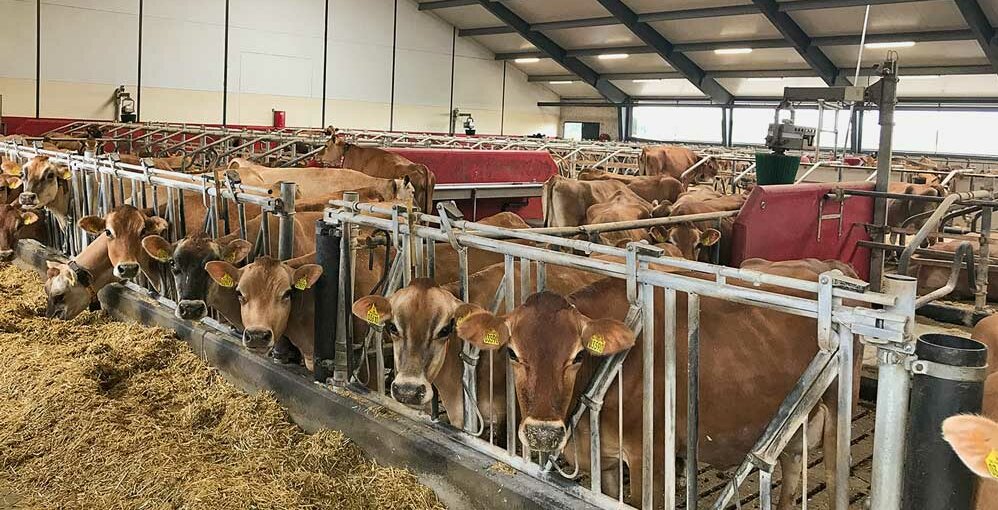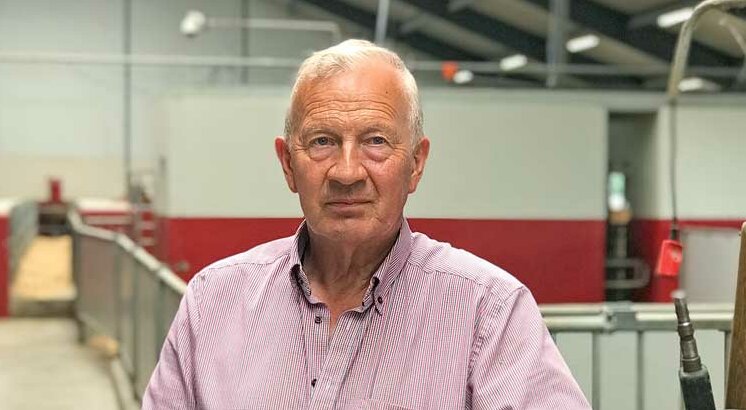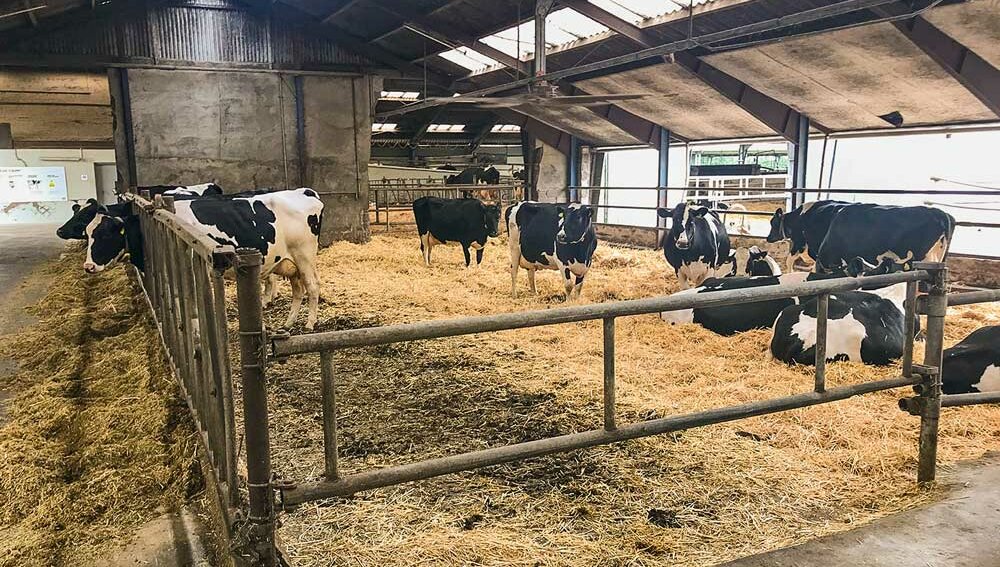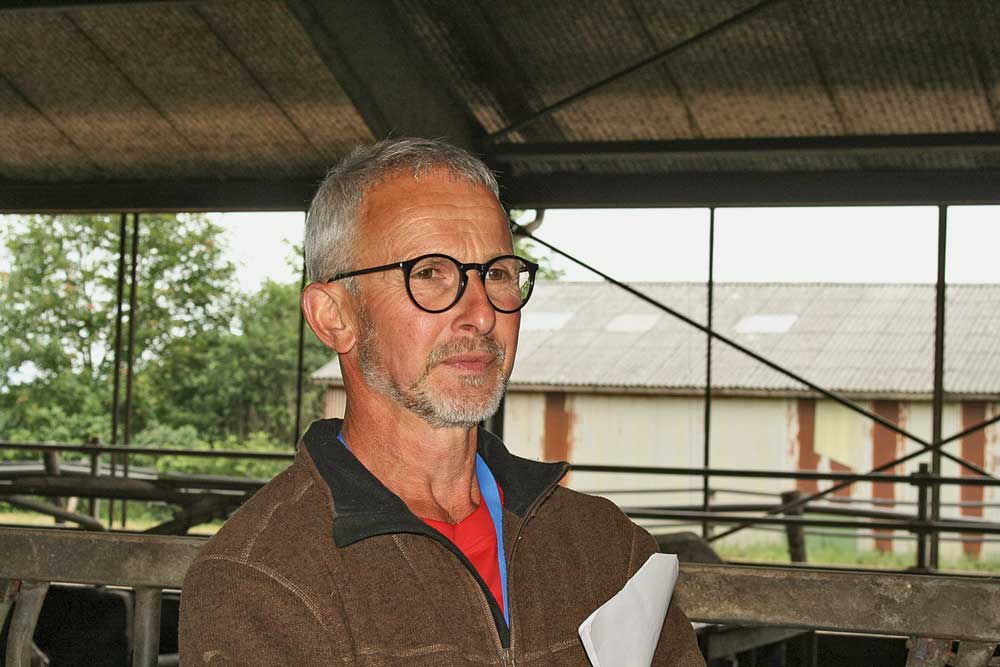Danish milk producers: Efficiency is the secret of their success
By Bianca Fuchs
It requires both courage and entrepreneurial skill to purchase a dairy farm, multiply cow numbers by a factor of four within just a few years and at the same time push average yield into a good five-figure range. It’s a performance that cannot be managed by all farmers: even in dairy land Denmark. However, the farms in this country’s southern Jutland region visited by the 2019 EDF Congress provided some examples of such levels of excellence. At the same time, not everything there is sweetness and light. A few of the locations seemed to have reached their limit, and many farmers experience problems finding successors.
Sanderink dairy farm
Just eight kilometres from the coast and near Ribe, Denmark’s oldest town, lies the Sanderink family farm. Ralf Sanderink immigrated to Denmark and bought the farm in 1987 with 100 cows and 85 ha land plus 35 rented hectares. Now, he farms with the help of his German-born wife Katrin and a staff of 11. In 2007 and 2012, the Sanderinks grabbed the chance to buy two neighbouring farms. »In 2007, the farmland price was rising quasi daily and it was still relatively easy to borrow investment capital from the bank.« However, this changed with the bank crisis in 2011 in the wake of which this farmer had to postpone a planned new cow barn and instead continued to milk on two sites.
Milk and potatoes
Today, the business runs 630 cows plus 611 youngstock, a relatively large number of followers because further expansion is on the books. »We want as much milk as possible from home-grown feed«, explains Sanderink. Currently, an average lactation of more than 10,600 kg ECM is achieved. Cows go twice-daily through a 2 x 25 side-by-side parlour with rapid exit. »We decided against robots because a parlour is more flexible regarding cow numbers and milking is cheaper«, says Sanderink. »Many farms with robots end up with no reduction in labour after the investment«, he adds. »This drives-up costs.«
Field work on most of the farm’s 463 ha is handled by a contractor. A big advantage is that most of the enterprise in ring-fenced, and over 90% of the land owner-occupied. A second income earning enterprise, which might well be expanded, is potato production with currently 65 ha grown for starch, the mainly sandy soil suiting this crop.
Further growth planned
Expansion of up to 1000 animals in the dairy herd is seen as possible on this location – the parlour being capable of running much longer than the current six hours daily. Currently, the farm keeps livestock in all three of its steadings, an inefficiency substantially increasing time and logistics inputs. »Monday is moving day«, explains Ralph Sanderink. Then, dry cows, heifers and calves are driven back and forth between the steadings when changing groups. Planned in the near future is an improvement in cow comfort within the old buildings, especially for dry and transit cows, and renovation of cubicles for the high yielders.
Høylund Agro
Setting foot in Laust Bendix Jensen’s cow housing near Esbjerg means being immediately impressed by the organisation and neatness in all areas.
The farm is very strongly oriented towards visitor groups coming to the farm to learn about modern agriculture. Between 2000 and 4000 of them visit annually. One reason is the nearness of Esbjerg and another is that dairy farmer Jensen is really interested in improving agriculture’s public image.
Success with Jerseys
Bendix Jensen bought this farm and built new cow accommodation in 1981. The first Jersey cow moved-in then. In 2011 a new barn and storage buildings were erected for 380 animals.
Nowadays, the unit is highly automated with five milking robots and a feeding robot. The number of robots means there’s hardly any waiting time for the cows. However, one of the milking robots even is reserved for the newly-calved group of Jersey cows.
The Jersey herd is high yielding with just under 10,400 kg ECM. Surplus heifers are sold for export.
As with many other Danish farms, Høylund Agro will be sold and not passed on within the family. After his son decided to return to his former career as banker, and with Bendix Jensen’s wife working outside the farm anyway, this farmer is now seeking a purchaser.
Ravnbjerg dairy
As with many of his compatriots in the 1980s and 90s, Johan Hoogeveen moved from the Netherlands to Denmark. In 1992, he bought his farm in Rødding with 80 cows and 40 ha plus 20 ha rented. In the 25 years since then, step-by-step expansion has led to the current situation with 345 cows on 237 ha and a staff of five. One of this team is herd manager Eric Cremers, a Dutchman who has just completed his first year in the business as potential successor, while none of the Hoogeveens‘ four children want to buy the farm. Milking is in a 2 x 12 side-by-side parlour. There’s always a team of three on duty with the herd: two staff members with either Johan Hoogeveen or Eric Cremers. Despite annual precipitation of 850 mm, the Ravnbjerg farmland has to be irrigated in dry years because the soil is light and very sandy. Cropped are 94 ha grass and 143 ha forage maize. Grass is also undersown in maize on part of the farmland.
Impressive milk production
The average lactation is just short of 13,000 kg ECM per cow: that’s outstanding. »The good conditions in the cow housing and careful handling of the animals are the reasons why our herd performs so well – and why we have a lifetime production averaging around 44, 500 kg«, reports Johan Hoogeveen. The farm has changed to three times milking per day along with feeding a compact TMR and both strategies have also helped performance, However, Hoogeveen also continually fine-tunes for still further herd improvements. For instance, an aim is to reduce the reproduction performance – even although this is already down to an average 4.7 from 10 cows, much lower than the EDF average of 7.7.
Cow stress is reduced, reckons this farmer, by not swapping cows from group to group according to lactation stage. If possible, milkers stay in the same group from calving onwards. »That the heifers form an extra group at calving results in them thanking us at once through a very much lower stillborn rate than in the past«, says Hoogeveen. Insemination is according to activity sensor results. »We have just bought a new separation system that guides any cow with »alarm mode« into an extra bay after milking«, he concludes.
Read more on dairy production in Denmark: www.dlg.org/en/agriculture/topics/dlg-agrifuture-magazine/knowledge-skills/daenemark-1/



